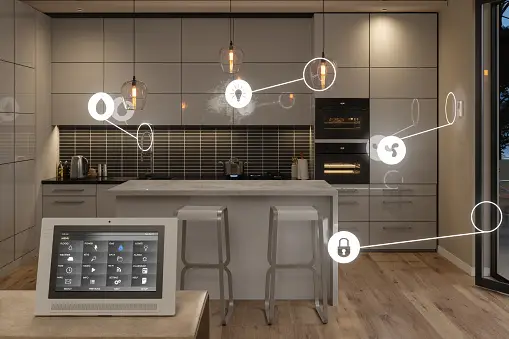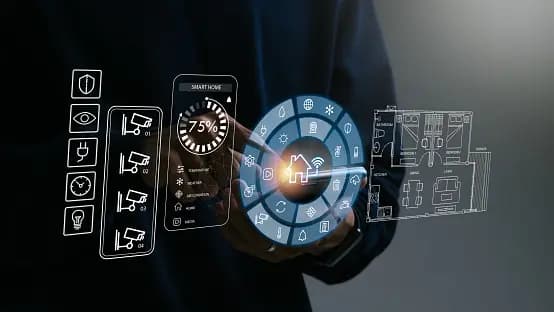
The Battle for the Smart Home: Giants Collide in the Connected Living Space
Introduction:
In the dynamic realm of modern living, the smart home has emerged as a battleground where tech giants compete for supremacy. This article delves into the interconnected world of smart homes and the fierce competition among industry leaders to dominate this space.
The Foundation:
Internet of Things (IoT) and Home Automation
Explore how the Internet of Things (IoT) forms the backbone of smart homes, facilitating seamless communication between devices. Learn how home automation integrates various technologies to create a cohesive living experience.

Leading the Charge:
Tech Titans and Their Ecosystems
Discover the key players in the smart home industry, including Amazon, Google, Apple, and Samsung, and their respective ecosystems. Learn about Amazon Alexa, Google Assistant, Apple HomeKit, and Samsung SmartThings as central hubs for smart home control.

Essential Components:
Smart Devices and Systems
Delve into the essential components of smart homes, including smart thermostats, security cameras, smart speakers, and lighting systems. Explore how these devices enhance convenience, efficiency, and security within the home.
Revolutionizing Control:
Voice Commands and Assistants
Learn how voice control has revolutionized smart home interactions, allowing users to control devices with natural language commands. Discover the capabilities of voice assistants like Alexa and Google Assistant in orchestrating the connected home.

Addressing Concerns:
Data Privacy and Security
Explore the growing concerns over data privacy and security in the smart home ecosystem. Learn about the challenges of ensuring robust home network security and addressing privacy concerns amidst the proliferation of connected devices.
Navigating Challenges:
Integration and Compatibility
Understand the challenges of integrating diverse smart home devices and ensuring compatibility across different ecosystems. Explore the complexities of firmware updates, interoperability issues, and user interface design in the smart home landscape.
Driving Innovation:
AI, Machine Learning, and Predictive Analytics
Discover how artificial intelligence (AI) and machine learning are driving innovation in smart homes, enabling predictive analytics and contextual awareness. Learn how startups are pushing the boundaries of smart home technology with disruptive solutions.

Embracing the Future:
Emerging Technologies and Sustainability
Explore the future of smart homes, including ambient computing, wearable devices, and connected car integration. Learn about sustainable living practices, energy-saving solutions, and smart home financing options shaping the trajectory of the industry.
Collaboration and User-Centric Design:
Unlocking the Potential
Understand the importance of collaboration and user-centric design in navigating challenges and unlocking the full potential of connected living. Learn how stakeholders in the smart home ecosystem can work together to address privacy concerns, enhance security measures, and deliver seamless integration.

Conclusion:
As the battle for the smart home rages on, one thing is clear: the connected living space is here to stay. With collaboration, innovation, and a commitment to user-centric design, stakeholders can create a future where technology enhances, rather than complicates, the way we live.
FAQs:
1. What is a smart home?
A smart home refers to a residence equipped with connected devices and systems that can be controlled remotely or automated to enhance convenience, efficiency, and security. These devices often utilize technologies such as the Internet of Things (IoT) and home automation to create a cohesive living experience.
2. How do voice assistants like Amazon Alexa and Google Assistant work in smart homes?
Voice assistants serve as central hubs in smart home ecosystems, allowing users to control a wide range of connected devices using natural language commands. By leveraging advanced speech recognition technology, these assistants facilitate hands-free control of smart speakers, lighting systems, thermostats, and more.
3. What are the main concerns regarding smart home technology?
The primary concerns surrounding smart home technology revolve around data privacy and security. With the proliferation of connected devices, ensuring robust home network security and addressing privacy concerns becomes paramount. Additionally, challenges such as integration issues, compatibility concerns, and user interface design complexities are also areas of focus within the smart home landscape.